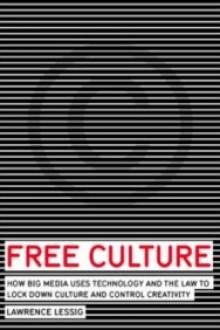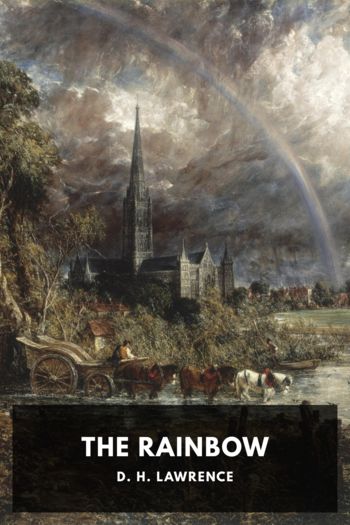Free Culture by Lawrence Lessig (short story to read .TXT) 📕

- Author: Lawrence Lessig
- Performer: 0143034650
Book online «Free Culture by Lawrence Lessig (short story to read .TXT) 📕». Author Lawrence Lessig
This is a kind of creativity. It is a creativity that we should remember and celebrate. There are some who would say that there is no creativity except this kind. We don't need to go that far to recognize its importance. We could call this "Disney creativity," though that would be a bit misleading. It is, more precisely, "Walt Disney creativity"--a form of expression and genius that builds upon the culture around us and makes it something different.
In 1928, the culture that Disney was free to draw upon was relatively fresh. The public domain in 1928 was not very old and was therefore quite vibrant. The average term of copyright was just around thirty years--for that minority of creative work that was in fact copyrighted. 4 That means that for thirty years, on average, the authors or copyright holders of a creative work had an "exclusive right" to control certain uses of the work. To use this copyrighted work in limited ways required the permission of the copyright owner.
At the end of a copyright term, a work passes into the public domain. No permission is then needed to draw upon or use that work. No permission and, hence, no lawyers. The public domain is a "lawyer-free zone." Thus, most of the content from the nineteenth century was free for Disney to use and build upon in 1928. It was free for anyone-- whether connected or not, whether rich or not, whether approved or not--to use and build upon.
This is the ways things always were--until quite recently. For most of our history, the public domain was just over the horizon. From 1790 until 1978, the average copyright term was never more than thirty-two years, meaning that most culture just a generation and a half old was free for anyone to build upon without the permission of anyone else. Today's equivalent would be for creative work from the 1960s and 1970s to now be free for the next Walt Disney to build upon without permission. Yet today, the public domain is presumptive only for content from before the Great Depression.
Of course, Walt Disney had no monopoly on "Walt Disney creativity." Nor does America. The norm of free culture has, until recently, and except within totalitarian nations, been broadly exploited and quite universal.
Consider, for example, a form of creativity that seems strange to many Americans but that is inescapable within Japanese culture: manga, or comics. The Japanese are fanatics about comics. Some 40 percent of publications are comics, and 30 percent of publication revenue derives from comics. They are everywhere in Japanese society, at every magazine stand, carried by a large proportion of commuters on Japan's extraordinary system of public transportation.
Americans tend to look down upon this form of culture. That's an unattractive characteristic of ours. We're likely to misunderstand much about manga, because few of us have ever read anything close to the stories that these "graphic novels" tell. For the Japanese, manga cover every aspect of social life. For us, comics are "men in tights." And anyway, it's not as if the New York subways are filled with readers of Joyce or even Hemingway. People of different cultures distract themselves in different ways, the Japanese in this interestingly different way.
But my purpose here is not to understand manga. It is to describe a variant on manga that from a lawyer's perspective is quite odd, but from a Disney perspective is quite familiar.
This is the phenomenon of doujinshi. Doujinshi are also comics, but they are a kind of copycat comic. A rich ethic governs the creation of doujinshi. It is not doujinshi if it is just a copy; the artist must make a contribution to the art he copies, by transforming it either subtly or significantly. A doujinshi comic can thus take a mainstream comic and develop it differently--with a different story line. Or the comic can keep the character in character but change its look slightly. There is no formula for what makes the doujinshi sufficiently "different." But they must be different if they are to be considered true doujinshi. Indeed, there are committees that review doujinshi for inclusion within shows and reject any copycat comic that is merely a copy.
These copycat comics are not a tiny part of the manga market. They are huge. More than 33,000 "circles" of creators from across Japan produce these bits of Walt Disney creativity. More than 450,000 Japanese come together twice a year, in the largest public gathering in the country, to exchange and sell them. This market exists in parallel to the mainstream commercial manga market. In some ways, it obviously competes with that market, but there is no sustained effort by those who control the commercial manga market to shut the doujinshi market down. It flourishes, despite the competition and despite the law.
The most puzzling feature of the doujinshi market, for those trained in the law, at least, is that it is allowed to exist at all. Under Japanese copyright law, which in this respect (on paper) mirrors American copyright law, the doujinshi market is an illegal one. Doujinshi are plainly "derivative works." There is no general practice by doujinshi artists of securing the permission of the manga creators. Instead, the practice is simply to take and modify the creations of others, as Walt Disney did with Steamboat Bill, Jr. Under both Japanese and American law, that "taking" without the permission of the original copyright owner is illegal. It is an infringement of the original copyright to make a copy or a derivative work without the original copyright owner's permission.
Yet this illegal market exists and indeed flourishes in Japan, and in the view of many, it is precisely because it exists that Japanese manga flourish. As American graphic novelist Judd Winick said to me, "The early days of comics in America are very much like what's going on in Japan now. . . . American comics were born out of copying each other. . . . That's how [the artists] learn to draw--by going into comic books and not tracing them, but looking at them and copying them" and building from them.5
American comics now are quite different, Winick explains, in part because of the legal difficulty of adapting comics the way doujinshi are allowed. Speaking of Superman, Winick told me, "there are these rules and you have to stick to them." There are things Superman "cannot" do. "As a creator, it's frustrating having to stick to some parameters which are fifty years old."
The norm in Japan mitigates this legal difficulty. Some say it is precisely the benefit accruing to the Japanese manga market that explains the mitigation. Temple University law professor Salil Mehra, for example, hypothesizes that the manga market accepts these technical violations because they spur the manga market to be more wealthy and productive. Everyone would be worse off if doujinshi were banned, so the law does not ban doujinshi.6
The problem with this story, however, as Mehra plainly acknowledges, is that the mechanism producing this laissez faire response is not clear. It may well be that the market as a whole is better off if doujinshi are permitted rather than banned, but that doesn't explain why individual copyright owners don't sue nonetheless. If the law has no general exception for doujinshi, and indeed in some cases individual manga artists have sued doujinshi artists, why is there not a more general pattern of blocking this "free taking" by the doujinshi culture?
I spent four wonderful months in Japan, and I asked this question as often as I could. Perhaps the best account in the end was offered by a friend from a major Japanese law firm. "We don't have enough lawyers," he told me one afternoon. There "just aren't enough resources to prosecute cases like this."
This is a theme to which we will return: that regulation by law is a function of both the words on the books and the costs of making those words have effect. For now, focus on the obvious question that is begged: Would Japan be better off with more lawyers? Would manga be richer if doujinshi artists were regularly prosecuted? Would the Japanese gain something important if they could end this practice of uncompensated sharing? Does piracy here hurt the victims of the piracy, or does it help them? Would lawyers fighting this piracy help their clients or hurt them?
Let's pause for a moment.
If you're like I was a decade ago, or like most people are when they first start thinking about these issues, then just about now you should be puzzled about something you hadn't thought through before.
We live in a world that celebrates "property." I am one of those celebrants. I believe in the value of property in general, and I also believe in the value of that weird form of property that lawyers call "intellectual property."7 A large, diverse society cannot survive without property; a large, diverse, and modern society cannot flourish without intellectual property.
But it takes just a second's reflection to realize that there is plenty of value out there that "property" doesn't capture. I don't mean "money can't buy you love," but rather, value that is plainly part of a process of production, including commercial as well as noncommercial production. If Disney animators had stolen a set of pencils to draw Steamboat Willie, we'd have no hesitation in condemning that taking as wrong-- even though trivial, even if unnoticed. Yet there was nothing wrong, at least under the law of the day, with Disney's taking from Buster Keaton or from the Brothers Grimm. There was nothing wrong with the taking from Keaton because Disney's use would have been considered "fair." There was nothing wrong with the taking from the Grimms because the Grimms' work was in the public domain.
Thus, even though the things that Disney took--or more generally, the things taken by anyone exercising Walt Disney creativity--are valuable, our tradition does not treat those takings as wrong. Some things remain free for the taking within a free culture, and that freedom is good.
The same with the doujinshi culture. If a doujinshi artist broke into a publisher's office and ran off with a thousand copies of his latest work--or even one copy--without paying, we'd have no hesitation in saying the artist was wrong. In addition to having trespassed, he would have stolen something of value. The law bans that stealing in whatever form, whether large or small.
Yet there is an obvious reluctance, even among Japanese lawyers, to say that the copycat comic artists are "stealing." This form of Walt Disney creativity is seen as fair and right, even if lawyers in particular find it hard to say why.
It's the same with a thousand examples that appear everywhere once you begin to look. Scientists build upon the work of other scientists without asking or paying for the privilege. ("Excuse me, Professor Einstein, but may I have permission to use your theory of relativity to show that you were wrong about quantum physics?") Acting companies perform adaptations of the works of Shakespeare without securing permission from anyone. (Does anyone believe Shakespeare would be better spread within our culture if there were a central Shakespeare rights clearinghouse that all productions of Shakespeare must appeal to first?) And Hollywood goes through cycles with a certain kind of movie: five asteroid films in the late 1990s; two volcano disaster films in 1997.
Creators here and everywhere are always and at all times building upon the creativity that went before and that surrounds them now. That building is always and everywhere at least partially done without permission and without compensating the original creator. No society,





Comments (0)